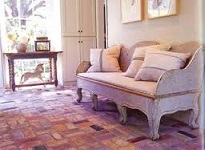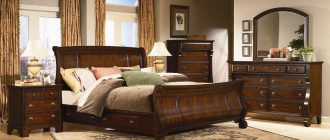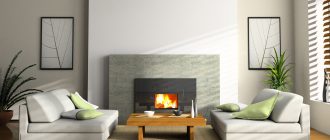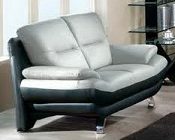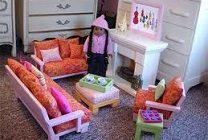Interested in Swedish country furniture? Read on for more information on the history and development of country furnishings from Sweden…
Over the years Swedish craftspeople have produced a wide variety of handcrafted furniture. The raw material for Swedish country furniture was most often found in the country’s northern forests, which provided an abundance of pine, spruce and other softwoods. Hardwoods were less plentiful and were found mostly in the southern regions of the country.
Purely rustic examples included rustic chairs, log seats, kitchen settees, dressers, drawers, cupboards, chests, blanket boxes, benches, and kitchen tables. As with many other hand-crafted items created in rural environments the Swedish country furniture often featured hand painted decorative elements that reflected lives and beliefs of country people.
Until styles borrowed from the continental part of Europe exerted an influence on Swedish furniture making much of the Swedish country furniture could be described as rough-hewn in a peasant style motif. Prime examples include log seats where a large log was used almost entirely intact with little milling or alteration of any kind as the basis for a seat.
Tables and chairs were hand-painted with natural elements encountered as a part of daily life in a rural environment. Images included wild flowers, crops and a veritable bestiary of animals both wild and domesticated.
The lines of older Swedish country furniture were typically simple and broad, although hand carved decoration in a folk art style was not uncommon. The styles prevalent in Swedish country furniture underwent a significant change with the arrival of the Gustavian influence.
The Gustavian Style gets its name from King Gustav III. Gustav ruled Sweden in the late 18th century, 1746 to 1792 to be exact. He not only ruled the country but profoundly influenced the style of furniture being made in the country he ruled. Gustav was a keen admirer of the neo-classical styles that were all the rage in more southern regions of Europe during his reign, particularly the French and Italian styles.
Henceforth tables, chairs and cabinetry made in Sweden adopted more elegant curves as opposed to the somewhat boxy nature of the rustic furniture tradition that prevailed in the country until that time. Lightly varnished, or unvarnished furniture pieces gave way to pieces painted in their entirety in light colors like soft whites, blues and grays.
Some of the weighty feel of traditional Swedish country furniture persisted within the new style as opposed to the less substantial styles of furniture from the Continent that had altered the native Swedish style.
The end result was a furniture style that looks truly regal, but that was truly capable of serving a practical purpose in the home of Scandinavians of every social stratum. The rococo excesses were subsumed beneath a Nordic need for practicality as well as style.

